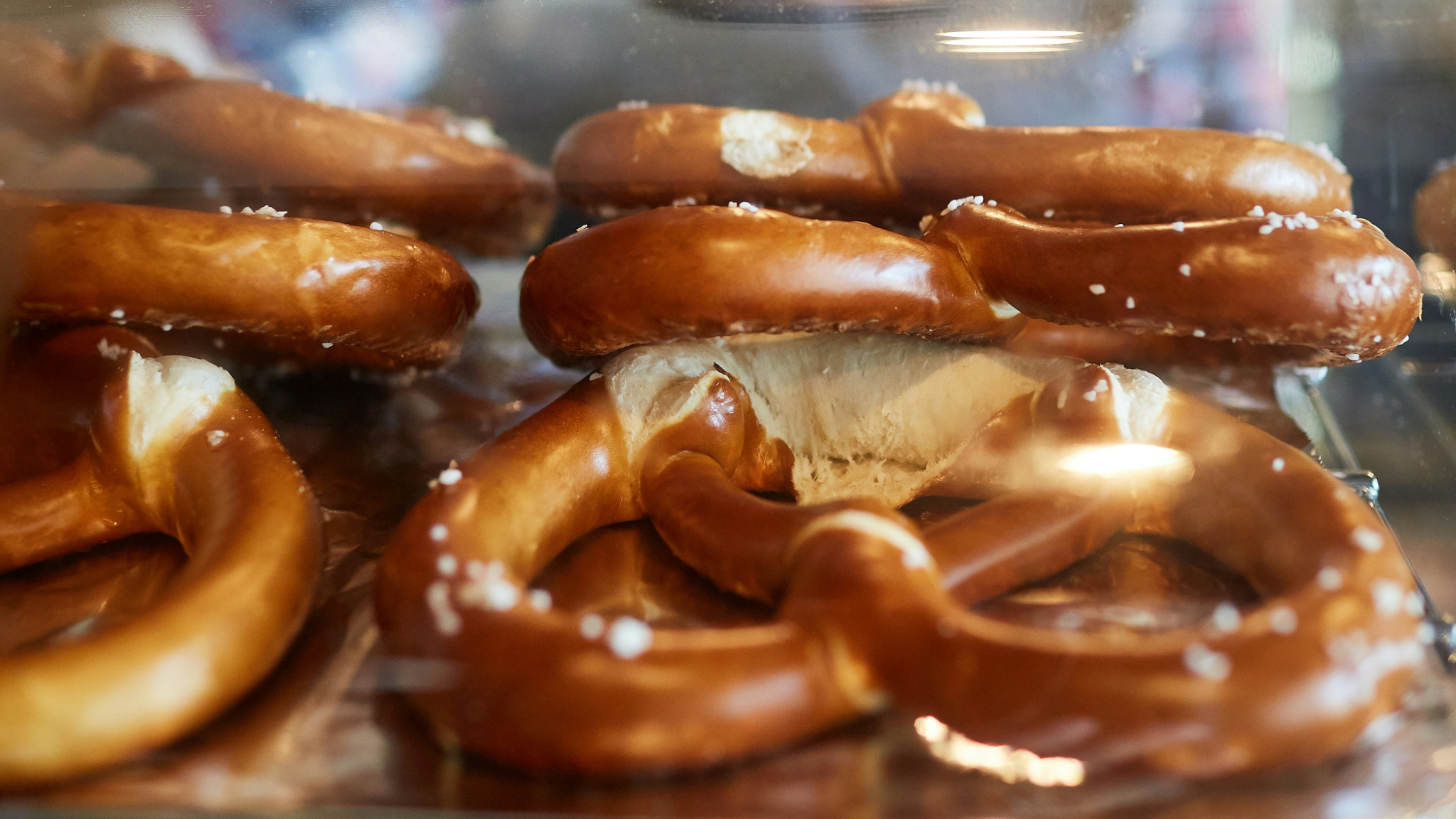This warm, chewy baked soft pretzel recipe is quick, easy, and the perfect salty snack.
Ingredients
- For the Dough
- 1 ½ cups warm water (110°F)
- 1 tablespoon sugar
- 2 ¼ teaspoons active dry yeast (1 packet)
- ½ teaspoon salt
- 4 cups all-purpose flour
- 2 tablespoons melted butter
- 1 tablespoon vegetable oil (for bowl)
- For the Baking Soda Bath
- 10 cups water
- ⅔ cup baking soda
- For the Topping
- 1 large egg, beaten
- Coarse salt (pretzel salt or sea salt)
- 2 tablespoons melted butter (for brushing after baking)
Instructions
1. Activate the yeast
In a large bowl, mix warm water and sugar. Sprinkle yeast over the top and let sit for 5–10 minutes until foamy.
2. Make the dough
Add salt, melted butter, and flour to the yeast mixture. Mix until a dough forms, then knead on a floured surface for 5 minutes until smooth. Place dough in an oiled bowl, cover, and let rise for about 1 hour, or until doubled.
3. Preheat the oven
Preheat oven to 450°F.
4. Shape the pretzels
Divide dough into 8 equal pieces. Roll each into a 20–22 inch rope and twist into pretzel shapes.
5. Baking soda bath
Bring 10 cups water and baking soda to a gentle boil. Drop each pretzel into the water for 20–30 seconds, then remove and place on a parchment-lined baking sheet.
6. Egg wash and salt
Brush each pretzel with beaten egg. Sprinkle generously with coarse salt.
7. Bake and enjoy
Bake for 12–15 minutes until deep golden brown. Brush with butter right out of the oven and enjoy!




















